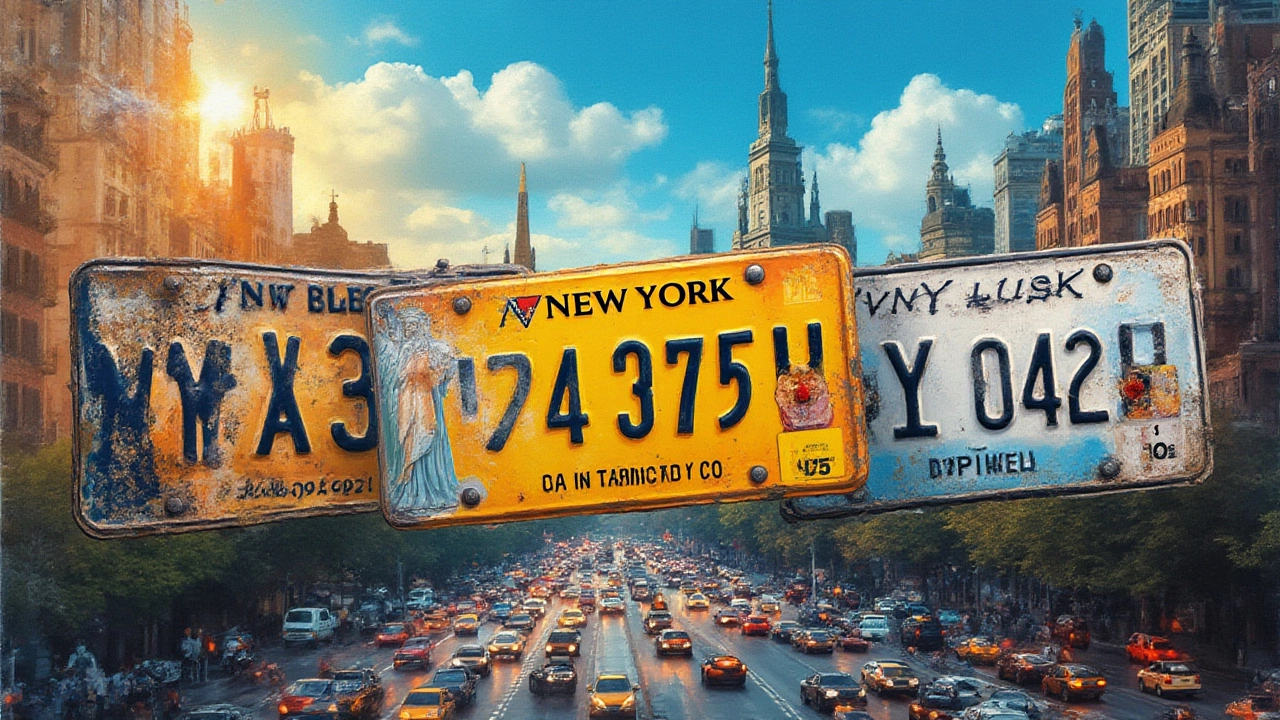NY License Plate Color Guide: What Every Driver Should Know
Ever wondered why some New York plates look different from others? The color isn’t just for show – it tells you a lot about the vehicle, its purpose, and even the owner’s status. In this guide we break down the most common colors you’ll see on NY roads, so you can read a plate at a glance.
Standard Plate Colors and Their Meanings
For most passenger cars, the everyday plate is a bright yellow background with black lettering. This classic combo has been standard for decades and is still the default for private owners. If you see a yellow plate, you’re looking at a regular, road‑ready vehicle with standard registration.
Commercial trucks and buses switch things up with a white background and black letters. The white plate signals that the vehicle is used for business purposes, such as deliveries or public transport. These plates often come with a small “COMMERCIAL” tag on the lower corner to avoid confusion.
Government vehicles – from police cruisers to city maintenance trucks – wear a deep blue background. The blue plate is instantly recognizable and lets other drivers know that the vehicle has official duties. In most cases you’ll also see the agency’s name or a seal printed on the side.
When a vehicle is older than 25 years and is considered a classic, New York issues a special “ANTIQUE” plate. These plates use a dark green background with white lettering, giving the car a vintage vibe while also indicating it’s exempt from certain emissions inspections.
Special & Customized NY Plates
New York offers a range of specialty plates that use distinct colors to showcase affiliations, causes, or personal interests. For example, the “TAXI” plate for licensed cabs is an orange background with black letters, making them easy to spot in traffic. Similarly, plates for disabled drivers feature a red background with white text, plus a wheelchair symbol for quick identification.
Personalized or vanity plates let owners choose their own combination of letters and numbers. These plates keep the standard yellow background but replace the usual sequence with a custom message. The price goes up a bit, but the result is a plate that reflects the driver’s personality.
University alumni, sports teams, and charitable organizations also have specially designed plates. They often incorporate the school’s colors or a logo, but they stay within the yellow‑or‑white‑background rule to keep the overall look consistent with state regulations.
If you’re buying a used car, checking the plate color can give you a quick clue about the vehicle’s classification. A yellow plate means a regular private car, white points to commercial use, and green hints at an antique status. Knowing these basics helps you avoid surprises when you’re filling out paperwork or negotiating a price.
Keep in mind that New York’s DMV updates plate designs from time to time, but the core color scheme stays the same. Always double‑check the latest NY DMV guidelines if you’re applying for a new plate or renewing an old one. That way you’ll get the right color, the right message, and stay fully legal on the road.
NY License Plate Colors: What to Know in 2025 (History, Styles, & Details)
by Arjun Mehta Jul 24 2025 0 Property RegistrationGet the facts on NY license plate colors in 2025, discover the history, tips for recognizing styles, and why colors change. Updated and detailed insights.
READ MORE